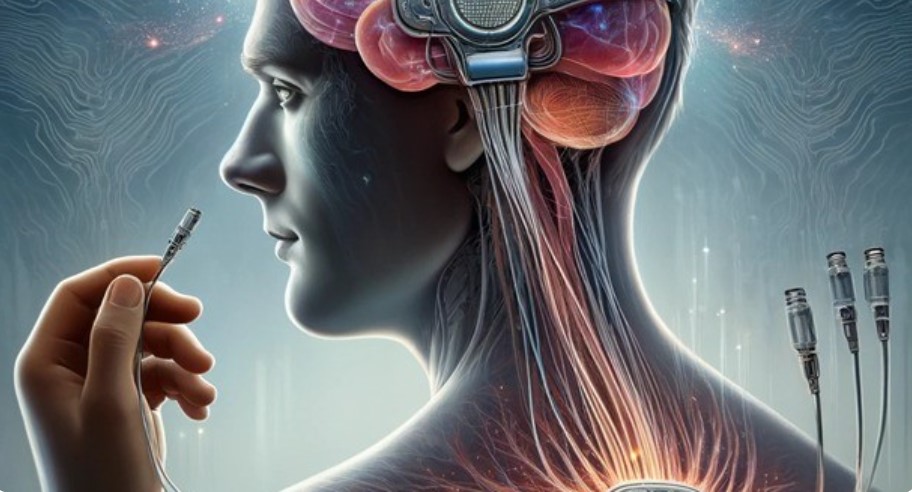In the vast expanse of human innovation, the convergence of Artificial Intelligence (AI) with medical and biotechnology fields heralds a new dawn of possibilities. This lyrical exploration delves into the prospects of AI’s application in these critical domains, painting a picture of a future where technology and life sciences intertwine to enhance human health and well-being.
I. The Prelude: A Symphony of Innovation
As the prelude to our exploration, we stand at the threshold of a new era where the symphony of innovation plays a harmonious tune, blending the precision of technology with the complexity of life sciences. AI, with its vast computational prowess and learning capabilities, is poised to revolutionize medical and biotechnological landscapes, offering solutions that were once the realm of science fiction.
II. The Foundation: AI in Medical Diagnostics
The foundation of AI’s role in medicine is its ability to analyze vast datasets with precision and speed, far surpassing human capabilities. In diagnostics, AI is emerging as a powerful ally, transforming the way diseases are detected and managed.
- Imaging Analysis: AI algorithms excel in interpreting medical images, from X-rays and MRIs to CT scans. They can identify patterns and anomalies with a level of accuracy that aids in early and precise diagnosis of conditions such as cancer, neurological disorders, and heart diseases.
- Predictive Analytics: Leveraging machine learning, AI can predict disease outbreaks and patient deterioration, enabling proactive healthcare measures and personalized treatment plans.
III. The Pillars: AI in Drug Discovery and Development
The pillars supporting AI’s potential in biotechnology are its contributions to drug discovery and development. AI accelerates the process of identifying potential drug candidates, reducing both time and cost.
- Target Identification and Validation: AI algorithms can sift through biological data to identify potential drug targets, predicting how different compounds will interact with biological systems.
- Molecular Modeling: AI enhances the understanding of molecular structures and interactions, aiding in the design of new drugs with higher efficacy and fewer side effects.
IV. The Framework: Personalized Medicine
AI is the framework that enables the realization of personalized medicine, tailoring healthcare to the individual characteristics of each patient. This approach promises more effective treatments with fewer adverse effects.
- Genomic Analysis: AI’s ability to analyze vast genomic datasets allows for the identification of genetic predispositions to diseases, enabling personalized prevention strategies and treatments.
- Treatment Optimization: Machine learning models can predict how patients will respond to specific treatments, optimizing therapeutic strategies for maximum efficacy.
V. The Interface: AI in Clinical Trials
The interface between AI and clinical trials is a bridge that streamlines the process of bringing new treatments to market. AI can enhance the efficiency and integrity of clinical trials by identifying suitable candidates and monitoring trial data in real-time.
- Patient Recruitment: AI tools can match potential trial participants with studies based on their medical profiles, increasing the diversity and efficiency of clinical trials.
- Data Monitoring: Continuous monitoring of trial data using AI can detect anomalies or adverse events promptly, ensuring patient safety and data integrity.
VI. The Compass: Ethical and Regulatory Considerations
As AI charts new territories in medical and biotechnology fields, a compass is essential to navigate the ethical and regulatory landscapes. The integration of AI must be guided by principles that ensure patient safety, privacy, and equitable access to technology.
- Bias and Fairness: AI systems must be designed to avoid biases that could lead to disparities in healthcare delivery.
- Transparency and Explainability: The decision-making processes of AI in healthcare should be transparent and understandable to both healthcare providers and patients.
- Regulatory Compliance: Adherence to regulatory standards is crucial for the safe and ethical deployment of AI technologies in sensitive areas such as healthcare.
VII. The Horizon: Future Prospects and Challenges
The horizon of AI’s application in medical and biotechnology fields is a landscape of boundless potential and challenges. The future holds promise for advancements in areas such as robotic surgery, virtual health assistants, and the integration of AI with wearable technologies for continuous health monitoring.
- Robotic Surgery: AI-powered robotic systems could enhance the precision and outcomes of surgical procedures, reducing recovery times and improving patient outcomes.
- Virtual Health Assistants: AI-driven virtual assistants could provide 24/7 support for patients, offering guidance, medication reminders, and preliminary health assessments.
- Wearable Technologies: The fusion of AI with wearable devices will enable continuous health monitoring, early detection of potential health issues, and personalized health management.
VIII. The Conclusion: A Journey of Hope and Responsibility
In conclusion, the prospects of AI in medical and biotechnology fields are a journey of hope and responsibility. AI holds the promise of transforming healthcare, making it more efficient, personalized, and accessible. However, this journey must be undertaken with a deep sense of responsibility towards ethical considerations, patient welfare, and equitable access to technology.
As we venture into this future, it is crucial to foster collaboration between technologists, healthcare professionals, ethicists, and policymakers. Together, we can navigate the challenges and harness the full potential of AI to create a healthier, more informed, and equitable world.
May this exploration inspire a vision of a future where AI and life sciences coalesce to enhance the human condition, as we journey towards a horizon of endless possibilities in the realms of medicine and biotechnology.
